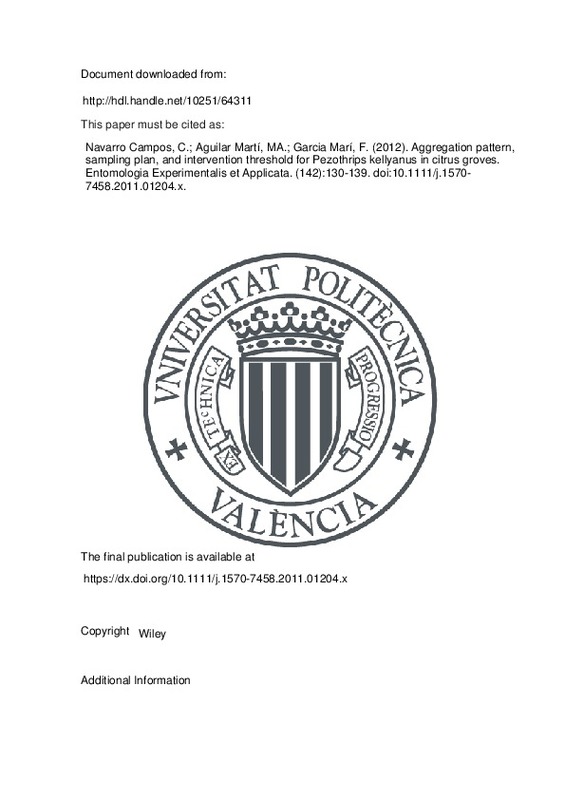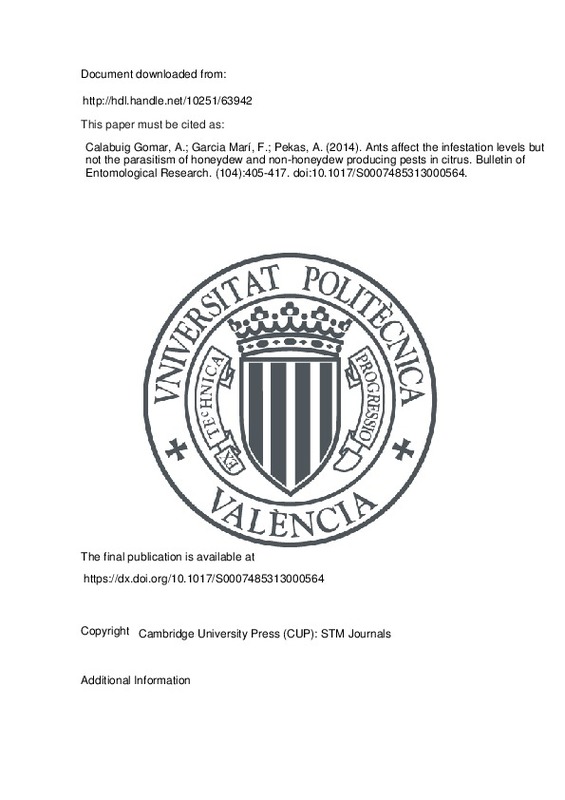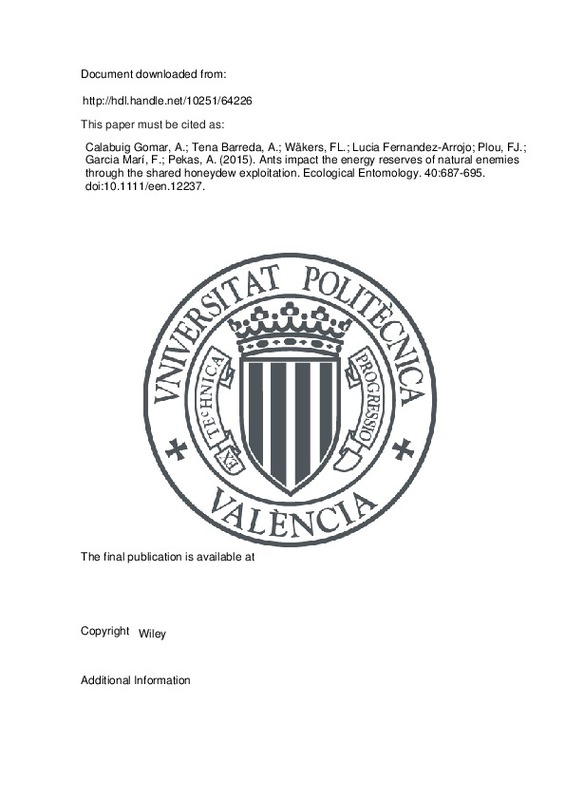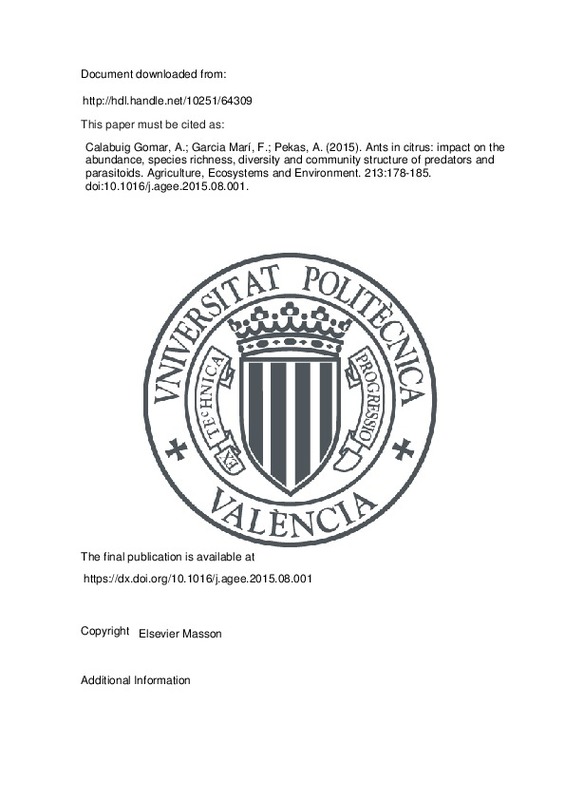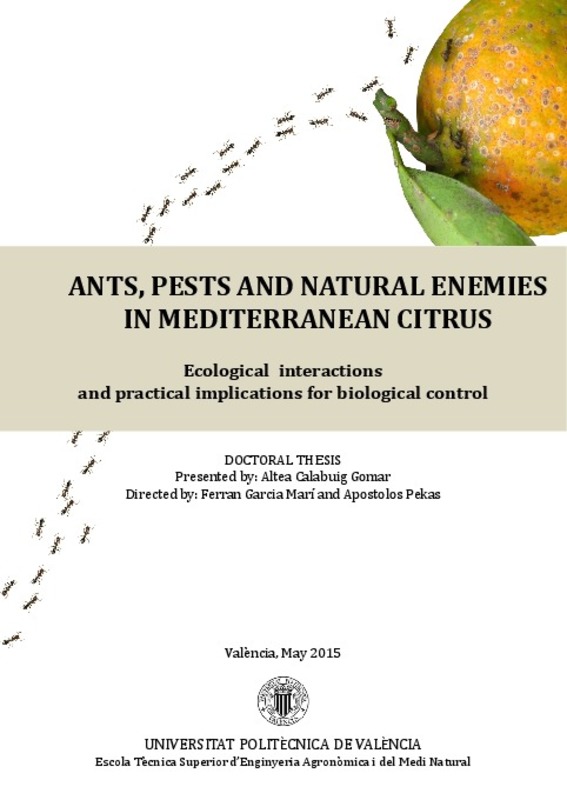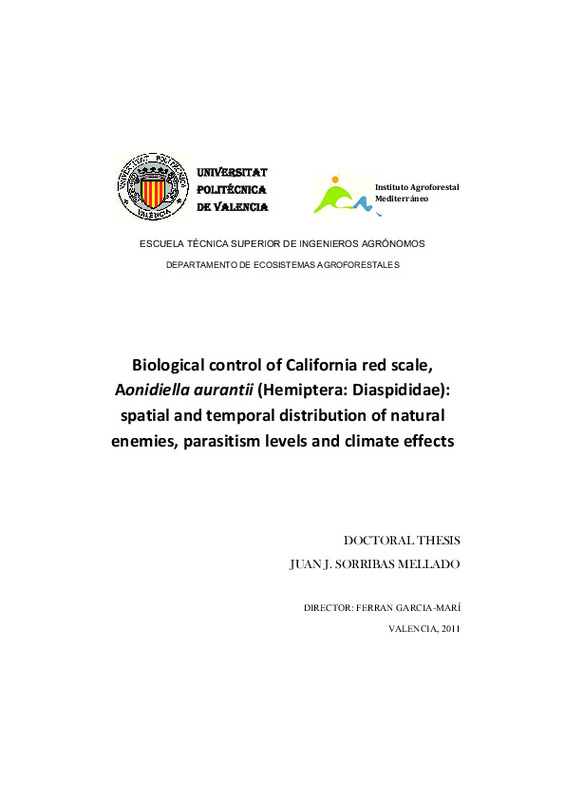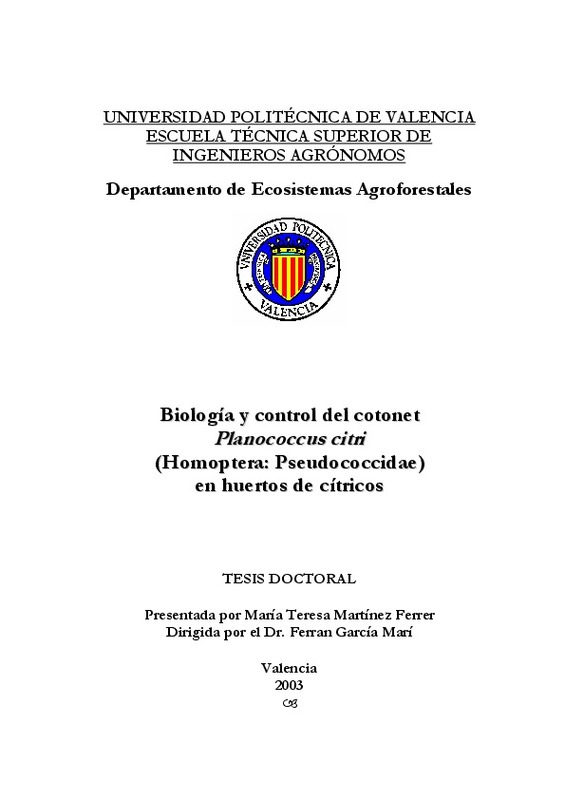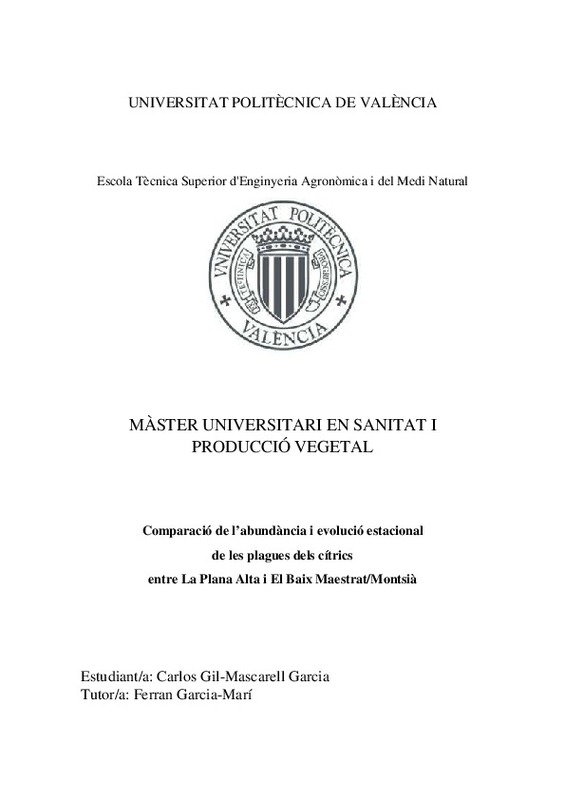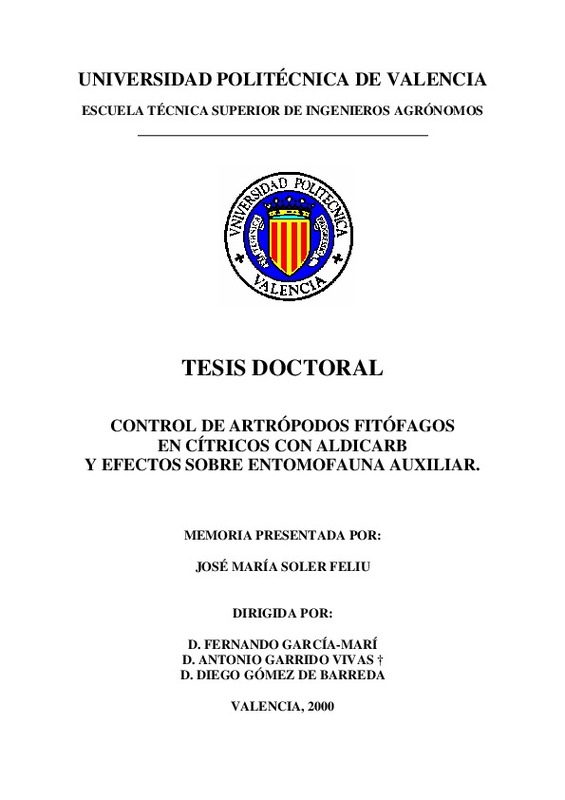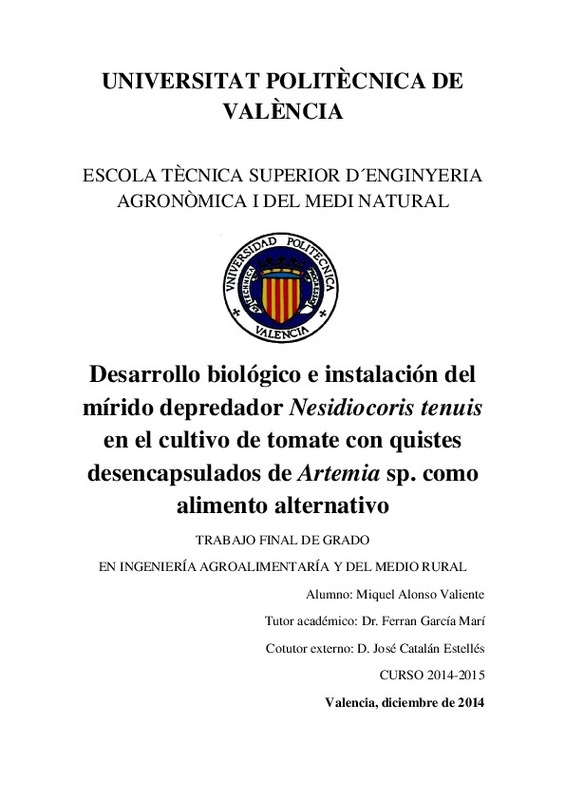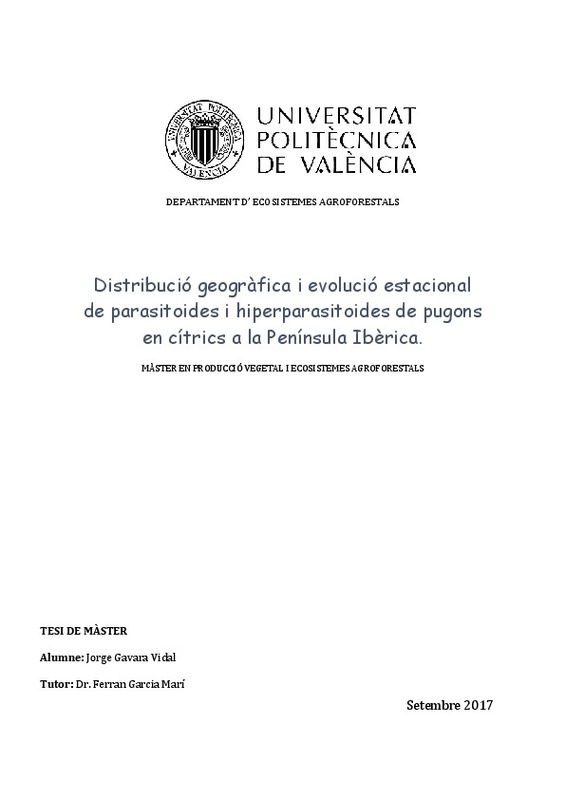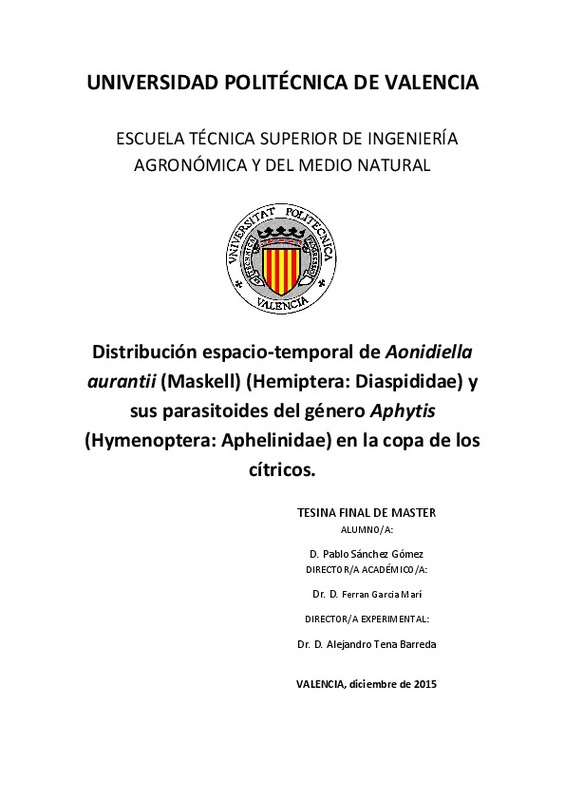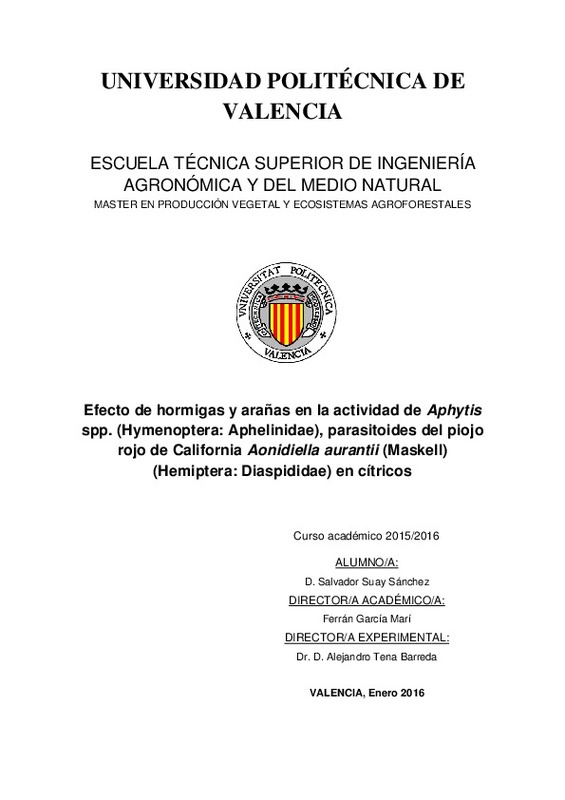

Listar por autor "García Mari, Ferran"
RiuNet: Repositorio Institucional de la Universidad Politécnica de Valencia
- RiuNet repositorio UPV
- :
- Listar por autor
JavaScript is disabled for your browser. Some features of this site may not work without it.
Buscar en RiuNet
Listar
Mi cuenta
Ayuda RiuNet
Admin. UPV
Listar por autor "García Mari, Ferran"
Mostrando ítems 1-20 de 52
-
Genovard Ortiz, María del Mar (Universitat Politècnica de València, 2015-06-15)[EN] We compare abundance and diversity of different natural enemies in citrus crops and studied between production system standard and a sustainable production system of citrus Food Chain Partnership, patented by Bayer ...
-
Navarro Campos, Cristina; Aguilar Martí, Mª Amparo; García Mari, Ferran (Wiley, 2012-02)[EN] Pezothrips kellyanus (Bagnall) (Thysanoptera: Thripidae) has recently emerged as an international pest of citrus. It causes severe scarring of the fruit surface and commercial downgrading of fresh fruit production. ...
-
Calabuig Gomar, Altea; García Mari, Ferran; Pekas, Apostolos (Cambridge University Press (CUP): STM Journals, 2014-08)[EN] Ants act simultaneously as predators and as hemipteran mutualists, and thereby may affect the composition and population dynamics of a wide arthropod community. We conducted ant-exclusion experiments in order to ...
-
Calabuig Gomar, Altea; Tena Barreda, Alejandro; Wäkers, Felix L.; Lucia Fernandez-Arrojo; Plou, Francisco J.; García Mari, Ferran; Pekas, Apostolos (Wiley, 2015-12)[EN] Ants, as well as many species of parasitoids and predators, rely on sugar-richfoodssuchashoneydewtofulfilltheirenergeticneeds.Thus,antsandnatural enemies may interact through the shared honeydew exploitation. ...
-
Calabuig Gomar, Altea; García Mari, Ferran; Pekas, Apostolos (Elsevier Masson, 2015-12-25)[EN] Although ants act as plant biotic defences, in agricultural ecosystems they are often associated with outbreaks of honeydew-producing pests mainly due to the protection they offer to the plant feeders in exchange for ...
-
Calabuig Gomar, Altea (Universitat Politècnica de València, 2016-07-24)[EN] Ants constitute an important component of the citrus agroecosystem fauna acting simultaneously as predators and as hemipteran mutualists. Thus, ants in citrus are in the center of a complex food web affecting the ...
-
Wäckers, Felix L.; Sánchez Alberola, Jesús; García Mari, Ferran; Pekas, Apostolos (Elsevier, 2017)[EN] Ants can act simultaneously as predators and as protectors of honeydew producing pests. As a result, their impact on plants can be both positive and negative. By guarding honeydew producers against their natural ...
-
Sorribas Mellado, Juan José (Universitat Politècnica de València, 2012-02-24)En muchas áreas citrícolas del mundo el piojo rojo de California (PRC), Aonidiella aurantii (Hemiptera: Diaspididae), está considerado una plaga clave. En el Este de España se ha extendido durante las últimas décadas hasta ...
-
Martínez Ferrer, María Teresa (Universitat Politècnica de València, 2013-04-11)Planococcus citri se considera una plaga importante de los cítricos en todo el mundo. El manejo de este fitófago se basa en los principios de la Producción Integrada, que requiere conocimientos precisos sobre la biología, ...
-
Beltrà Ivars, Aleixandre (Universitat Politècnica de València, 2014-05-06)Phenacoccus peruvianus (Hemiptera: Pseudococcidae) is an invasive mealybug of Neotropical origin, first reported in the Mediterranean Basin in Almeria (Spain) in 1999. In the following years the mealybug spread into other ...
-
Gil-Mascarell García, Carlos (Universitat Politècnica de València, 2017-08-31)The main pests of Citrus crops in the regions of La Plana Alta and Baix Maestrat / Montsià have been monitored, sampling 10 commercial orchards each week in each of the two zones. The selected orchards were approximately ...
-
Laborda Cenjor, Rafael (Universitat Politècnica de València, 2012-07-26)El desarrollo de la agricultura en la actualidad evoluciona hacia sistemas sostenibles de gestión de plagas en los que los plaguicidas orgánicos de síntesis dejan de ser esenciales en la lucha contra plagas, tendiéndose ...
-
Cabrera Laborde-Bois, Paula (Universitat Politècnica de València, 2016-11-28)[EN] It designs and makes a field experience to control populations of a new species of whitefly present in citrus orchards. Because of their shape and habitat development that occupies the old leaves of the tree, it has ...
-
Sorribas Mellado, Juan José; García Mari, Ferran (Elsevier, 2010-10)The California red scale (CRS), Aonidiella aurantii, a worldwide citrus pest, has the ectoparasitoid Aphytis melinus as its main natural control agent. Other natural enemies can complement A. melinus in the pest control. ...
-
Soler Feliu, Jose-Maria (Universitat Politècnica de València, 2009-07-07)Aldicarb es un plaguicida utilizado en el cultivo de los agrios. Se ha estudiado su efecto con el objetivo de conocer la acción sobre ciertas plagas, el impacto sobre insectos beneficiosos, la influencia en el desarrollo ...
-
Alonso Valiente, Miquel (Universitat Politècnica de València, 2015-07-17)[EN] Tuta absoluta (Meyrick) (Lepidoptera: Gelechiidae) caused great damage in tomato crops during the first years after its introduction in 2006. After several years using insecticides, its integrated management was ...
-
Gavara Vidal, Jorge (Universitat Politècnica de València, 2017-10-16)Two species of aphids, the predominant species Aphis spiraecola and the secondary Aphis gossypii, are found at relevant levels on citrus crops of the Iberian Peninsula. The presence of primary parasitoids should minimize ...
-
Sánchez Gómez, Pablo (Universitat Politècnica de València, 2017-01-09)[EN] The California red scale, Aonidiella aurantii (Maskell) (Hemiptera: Diaspididae), is one of the most important citrus pest worldwide. Aphytis parasitoids are its main natural enemies. However, in the Mediterranean ...
-
Suay Sanchez, Salvador (Universitat Politècnica de València, 2017-01-09)[EN] Aonidiella aurantii (Maskell) (Hemiptera: Diaspididae) is one of the most important citrus pest in the Mediterranean area. Parasitoids of genus Aphytis (Hymenoptera: Aphelinidae) are its main natural enemies and ...
-
Pekas, Apostolos; Tena Barreda, Alejandro; Aguilar Martí, Mª Amparo; García Mari, Ferran (Oxford University Press, 2010)[EN] We conducted an ant-exclusion experiment in a citrus orchard to evaluate the overall impact of three ant species native in the Mediterranean, Pheidole pallidula (Nylander), Plagiolepis schmitzii Forel, and Lasius ...
Mostrando ítems 1-20 de 52

Universitat Politècnica de València. Unidad de Documentación Científica de la Biblioteca (+34) 96 387 70 85 · RiuNet@bib.upv.es



